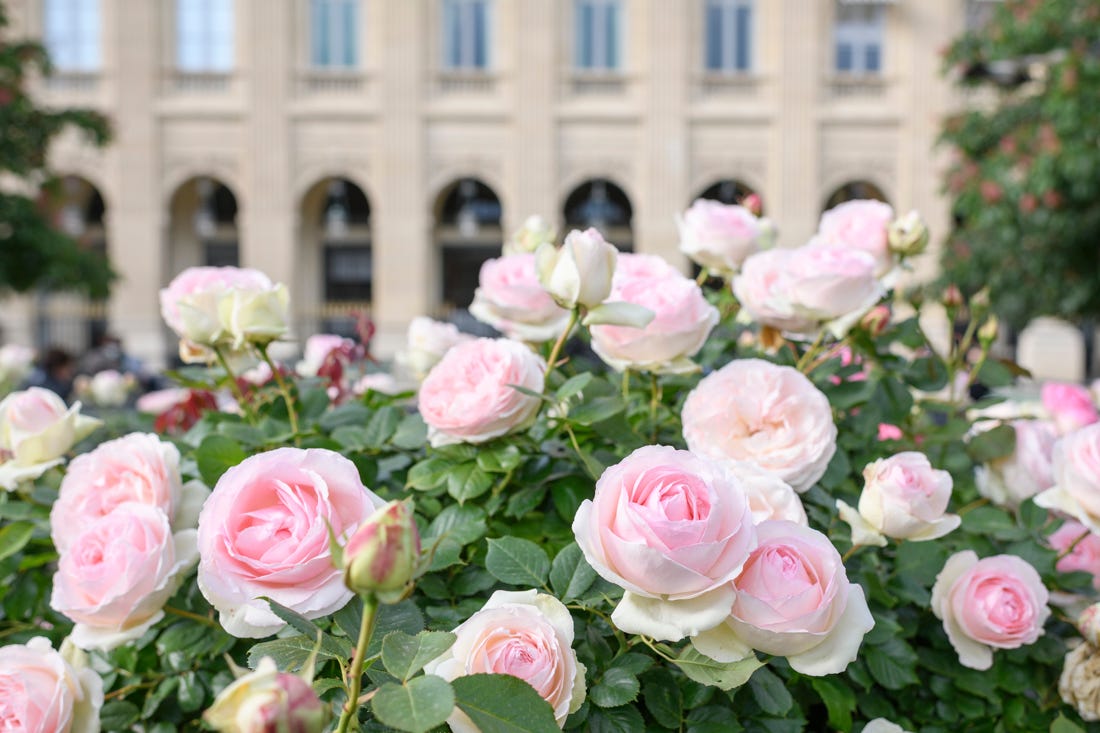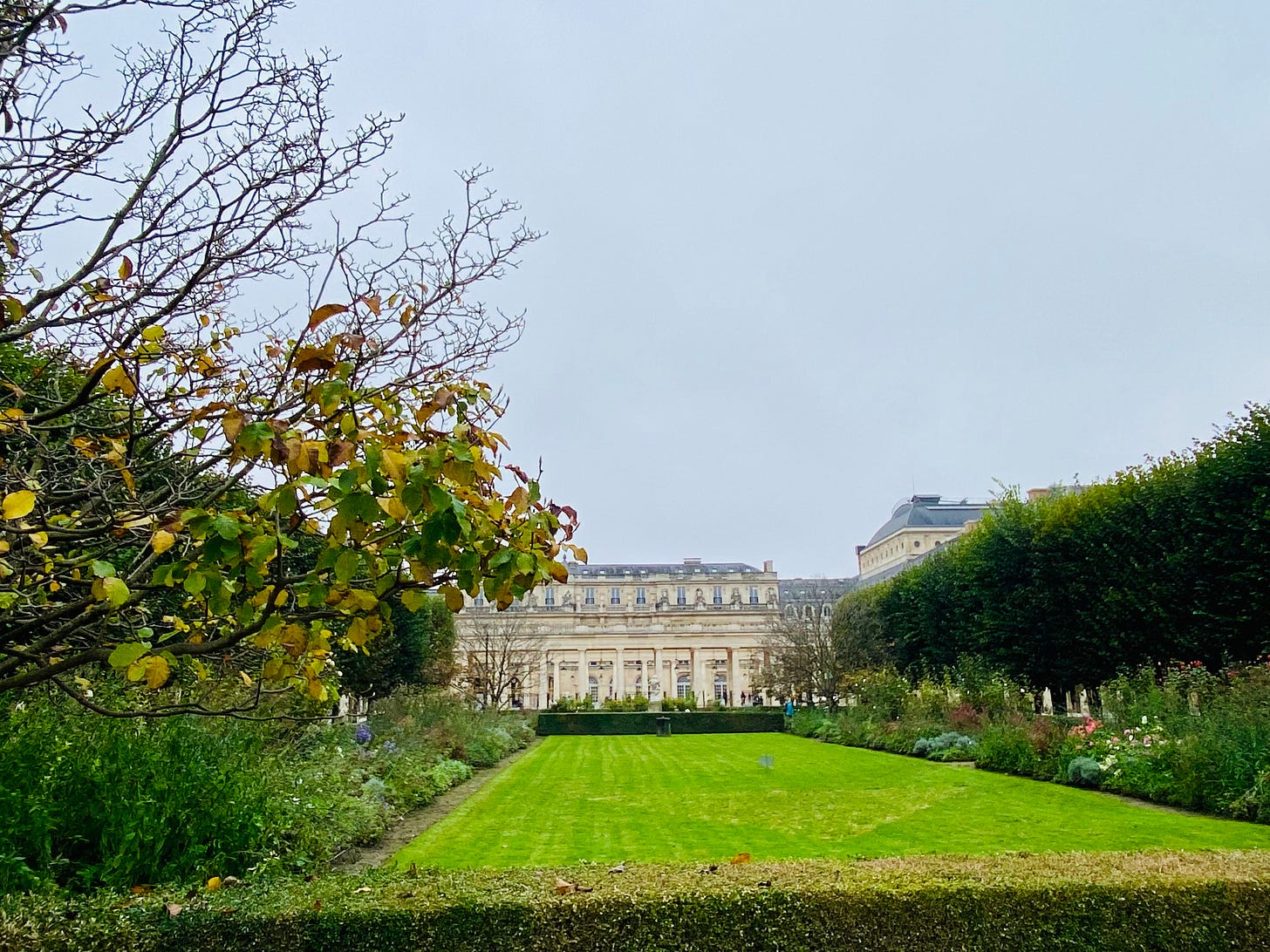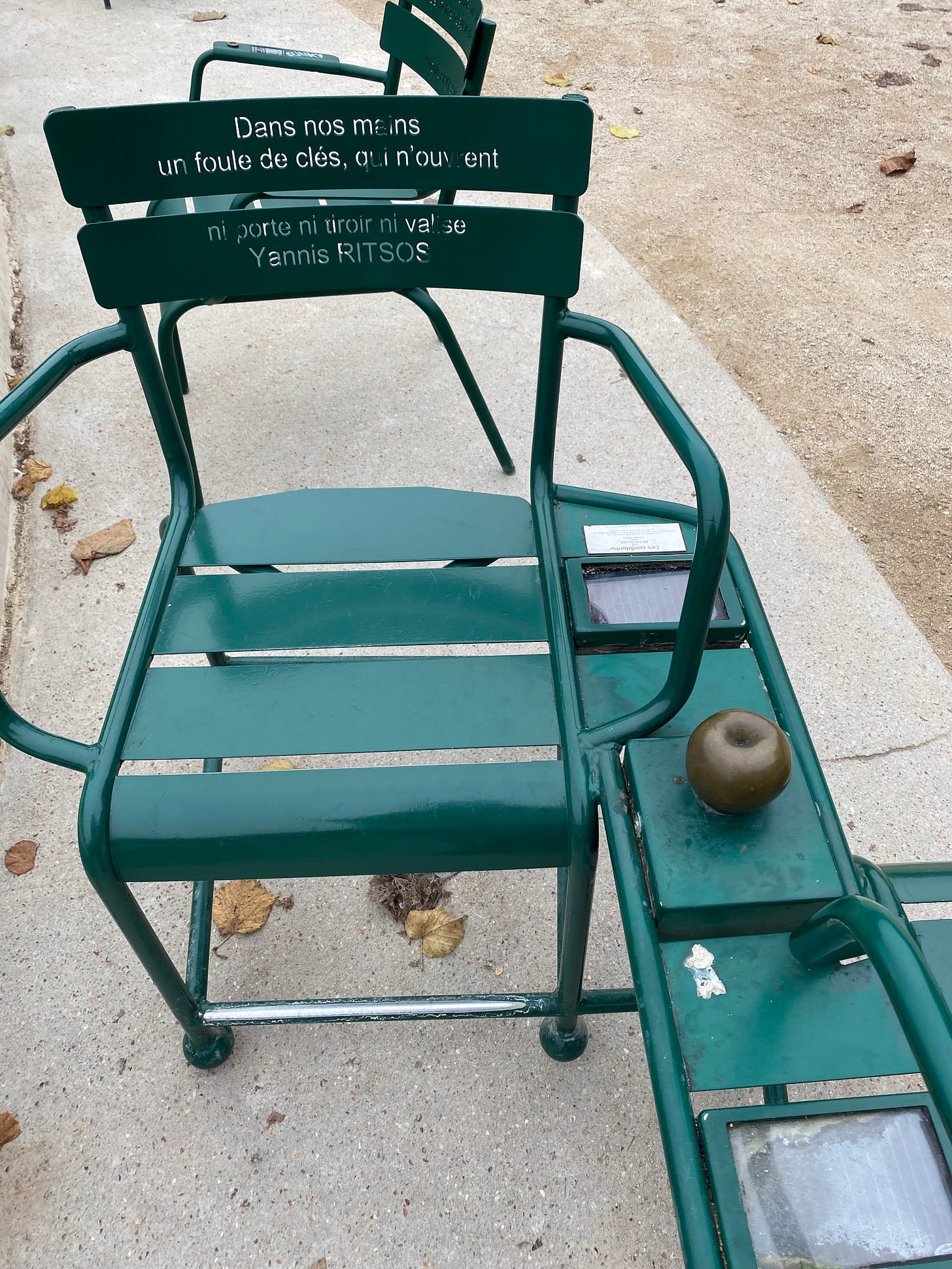A.C.
First of all, I would like to welcome all the new subscribers that have joined these last few days. I’m so happy you are here!
Writing a weekly essay is quite a journey and so is starting a self appointed artist’s residency. I’ve begun writing about unusual Parisian gardens because I felt drawn to their beauty. With time I’ve realized that what interests me most is to write about the place Nature occupies in the city. The peaceful calm it brings to the, often hectic, urban pace. The calm that I hope you will find in my writings as well.
With better understanding of what it is that I write about, comes a more cognizant choice of the genre. What started as long form texts is becoming more condensed. A Japanese poetry form of haiku particularly appeals to me by its purity and capacity to evoke an image. Haiku is also seasonal, a reflection of nature in one fleeting moment. I gather my haiku, like small precious pieces of amber: smoothed by the sea and softly glowing, in narrow notebooks. I write the poems out in black ink with a brush pen and often add an ink drawing. Not an illustration per se, but an image that has a connection to the poem and evokes something.
Here is the haiku I wrote after taking two long walks in the garden of Palais Royal:
Roses stretch up
Grasses wear crowns of seeds-
Water whispers.
The Palais Royal garden is situated in the 1st arrondissement of Paris, the Louvre is located here. The other garden that I’ve taken you to in this part of the city is the Tuileries, I hope that you’ll come and sit with me for a while under the lime trees of the neighbouring Palais Royal.
Photo credit: Georgianna Lane.
The first line of the haiku mentions the roses which are the glory of the garden. If you were to look at the “jardins” from above you would see clear rectangular shapes contained one within the other. This is not a garden where one gets “lost” but it does create a sense of space, a possibility to keep on walking. The rectangle in the middle is planted with roses. The majority of the roses in the main bed are the beautiful pink Pierre de Ronsard, also known as Eden Rose. It is a vigorous climber and produces endless romantic, fragrant blooms. But the garden also features other roses in cream and red. In the end of October only a few red petaled ones remain, like ruby dabs of paint on the grey canvas.
The garden stretches beyond the building of the Comédie Française. Its lay out is theatrical in itself: the lime trees trimmed to look like a curtain, long stemmed grasses bowing their heads like actors on a stage, after a performance. Parallel to the alleys lie covered passageways with narrow arches. Just like on a stage set, the garden has different depths.
I imagine a female figure, gathering up her skirts and hurrying through the light and the shade of the arches. In 1793, Charlotte Corday, bought a knife at the boutique of Monsieur Badin, at 180 of Palais Royal with which she would end the life of Marat, Robespierre’s comrade-in-arms. The history of the Palais Royal gardens doesn’t only contain drama, or at least not only of the bloody revolutionary kind. At one point the boutiques of famous couturiers who dressed the ladies of the court were located in the Palais Royal. Who knows what dramas have played themselves out behind the storefronts: the fabric tearing, the seamstress leaving to the “competition”, one lady finding that the other’s dress was better. Today Didier Ludot’s store offers “little black dresses already worn” sewn by the most renowned couturiers.*
The Palais Royal gardens are a stage. One can command attention while walking the central path or quietly observe from the wings. As in the theatre the air itself is filled with poetry. Famous French poets Colette and Jean Cocteau had their apartments above the gardens. The Comédie Française has seen, and continues to offer its stage, to all the “greats”. The verses of Eurypides , Shakespeare, Molière resonate inside and then find their way into the gardens, settling on the chairs and the benches.
It is possible to connect your phone and to listen to the poems while sitting down for a while. The narrator’s voice will mix itself with the soft bubbling of water from the fountain and the happy screams of kids coming from an adjacent place where black and white columns of various heights were installed by the French sculptor Daniel Buren. The history and the modernity side by side in this unique and peaceful place.












I am sorry I am late joining you this week. There is so much I love about this piece: the "crown of seeds" in your haiku and the stage set of the gardens where so much history has been played out. A beautiful piece.
No need to be sorry- and in any case the ordinary time doesn’t exist in a garden. So glad you’re here 👑